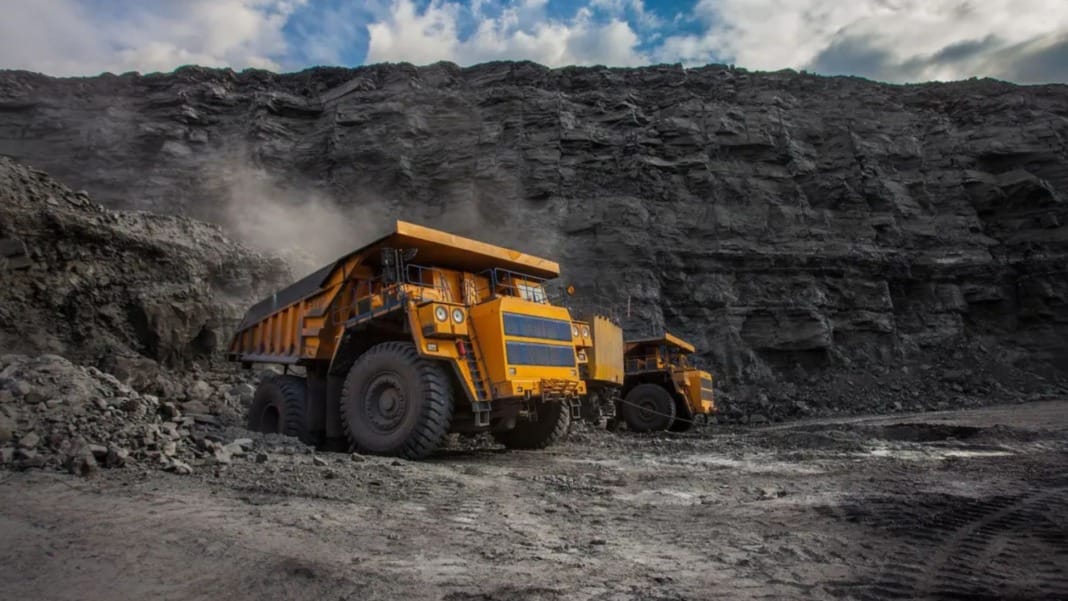In the heart of Inner Mongolia, a coal mine is transforming how the world sees mining. At the vast Yimin open-pit mine, giant trucks carry coal and rubble across rugged terrain — but with no one behind the wheel. This is not a scene from a science fiction film but a real glimpse into the future of mining in China.
Once dependent on a large workforce of truck drivers, Yimin is now leading the shift toward automation. With China facing a shrinking workforce and an ageing population, traditional industries are adapting quickly. You can now see how technology reshapes one of China’s oldest trades.
From labour shortages to driverless solutions
Yimin is among China’s five biggest open-cast coal mines. In the busy season, it operated nearly 300 trucks, employing around 1,200 drivers who worked in shifts day and night. However, driver shortages, difficult working conditions, and fewer young people wanting these jobs made operations harder to maintain.
“Truck drivers face exhausting workloads that often lead to health issues,” explained Shu Yinqiu, the mine’s director. These challenges pushed the mine to seek a more sustainable solution — they found it in autonomous vehicles.
Earlier this year, Yimin introduced 100 solar-powered, electric self-driving trucks, the world’s largest fleet of their kind. Called Huaneng Ruichi, they are helping China modernise its coal industry and reduce the need for manual labour in dangerous conditions.
The change means that instead of over 1,000 drivers, only 24 workers are now needed. These teams work from a remote control room, monitoring live video feeds and real-time screen traffic data. It’s safer, more efficient and less physically demanding.
China’s big push towards intelligent mining
The move is part of a national effort to build “intelligent coal mines”. Since 2020, China’s government has set goals to digitise the coal industry. By 2026, at least 60% of coal output should come from smart systems, and 30% of physically demanding jobs should be replaced by automation.
Yimin’s transformation was made possible through support from big names like Huawei Technologies, Xuzhou Construction Machinery Group, the State Grid, and the Beijing University of Science and Technology. The central government’s policies encouraged investment and provided clear goals for smart upgrades.
The Ruichi trucks also make an environmental difference. Powered by photovoltaic batteries, they can save 15,000 tons of diesel and cut 48,000 tons of carbon dioxide emissions a year. They are tough, too — built to run in harsh conditions, even in temperatures as low as -40°C.
China’s efforts are paying off. According to the China National Coal Association (CNCA), fewer than 200 smart coal mines existed in the country a few years ago. Now, over 1,000 are using intelligent technologies. As of September, more than 1,500 autonomous mining trucks were in operation across the country, with that number expected to hit 10,000 by 2026.
Challenges and global potential
The rise of automation in mining has helped cut costs. The CNCA says 100 self-driving trucks could save operators about 40 million yuan (US$5.6 million) a year in driver wages. This is especially important now, as China’s coal sector struggles with falling profits — last year saw an 11% drop in revenue and a 22% decline in profit.
Still, experts warn that the high cost of self-driving tech may be too much for smaller mines. “The smaller the mine, the more complex the layout, and the harder it is to use driverless trucks,” said Lin Qiao, a vice president at Eacon, a company making autonomous mining vehicles. Upgrading roads and systems in older, smaller sites can be expensive, and not every operation will see a return on the investment.
There’s also concern that China’s rapid digital expansion could lead to waste. “Like other infrastructure projects in the past, there is a risk of inefficient spending,” noted Rebecca Arcesati from the Mercator Institute for China Studies.
Even so, the outlook remains positive. Huawei believes this technology could soon be exported to markets in Africa and Latin America, offering a new global model for mining.
As China upgrades its industries, mines like Yimin show how technology, when used wisely, can improve safety, cut emissions, and create more efficient systems. The future of mining is not just coming — it’s already here.





